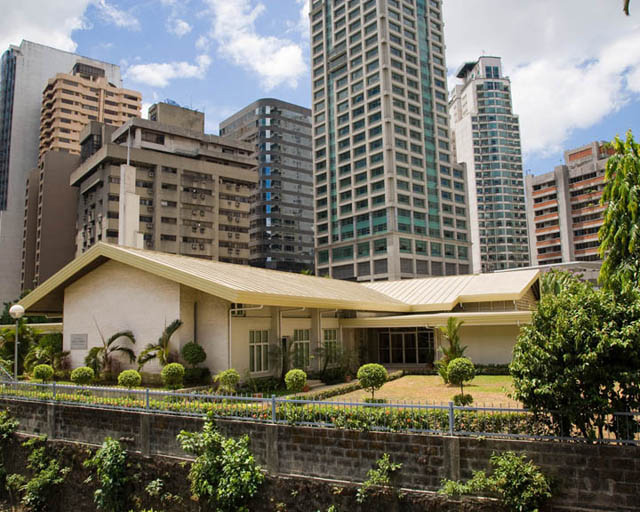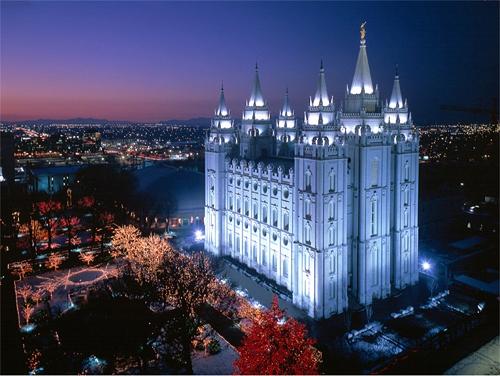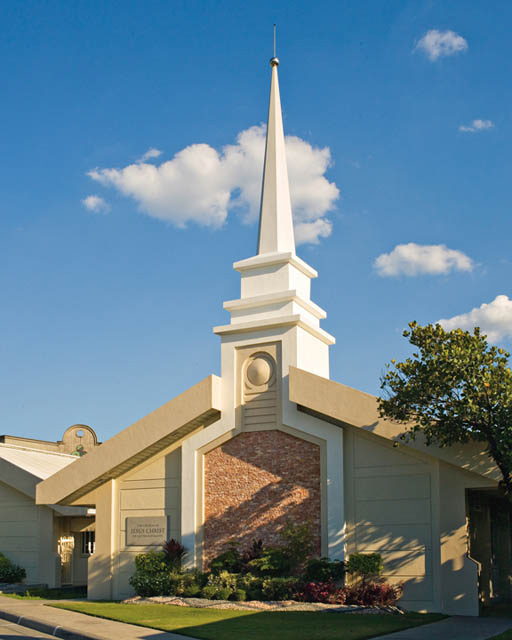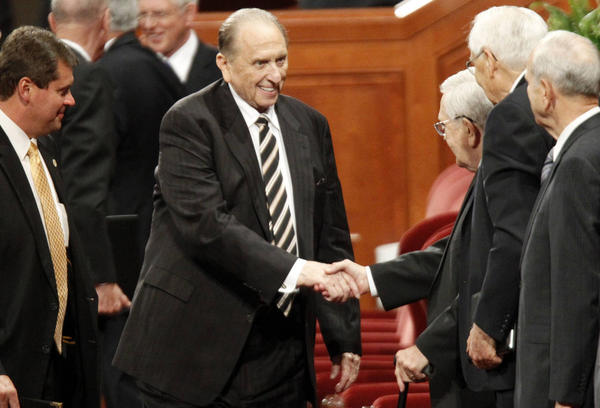Have you ever wondered what a Mormon Meetinghouse looks like? Members of the Church of Jesus Christ of Latter-day Saints are often informally called Mormons, and many wonder what the inside of their churches look like. The churches, unlike the temples, are open to anyone, including those who are not members of the Church, and are used for Sunday services, as well as for weekday activities. The church has filmed a virtual tour of a typical Mormon church building. The one shown in this tour is somewhat larger than most, and appears to be quite new. However, it would feel comfortingly familiar to any Mormon who walked in, since it looks much like every other Mormon church building.
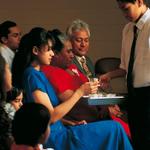 Open the tour of the Mormon Meetinghouse in another window and look around. I’ll discuss some of the rooms here in more detail. By going to the map below the video, you can select any room you want to view.
Open the tour of the Mormon Meetinghouse in another window and look around. I’ll discuss some of the rooms here in more detail. By going to the map below the video, you can select any room you want to view.
Begin by clicking the foyer. The tour starts you outside the building. Although Mormon buildings tend to have a similar look in most areas, you will sometimes find buildings that are quite different, due to age or to a need to blend with the neighborhood. Mormons work hard to be sure their buildings fit in and are neatly kept up. Members are encouraged to be good neighbors.
Mormons usually enter their buildings through the “back door” since parking is often tucked behind the building. When you enter, you find yourself in a foyer with a sofa and several chairs. People use this foyer to greet each other before meetings. During the weekday meetings, you’ll often find parents socializing or reading while they wait for their children. If you are visiting a Mormon church for the first time, you will find people here who will be happy to show you around and sit with you through the meetings. You’ll often find missionaries here (identifiable by their name tags) who can answer your questions and help you make sense of your visit.
Take a moment to look at the artwork in the foyers. Each foyer typically contains pictures of Jesus Christ or other religious scenes.
Follow the arrows to the chapel. If you entered from the parking lot, the chapel is normally straight ahead as you enter the foyer. You’ll notice, as you enter the chapel, it is very plain. This is a surprise to many who are used to ornate chapels. There are no crosses, artwork, or other decorations. A clock may be the only thing on the wall, and sometimes there will be flowers on the podium. Our complete focus during services should be on the Savior and on the speakers and events in the service, so there is little to distract us. This promotes a quiet feeling of peace.
The pews are normally padded and you may sit anywhere you like. You’ll frequently find young families situated near doors, because even the smallest child is welcome in our service. There is no nursery during this portion of the day. Children snuggle with their parents or play quietly, eventually learning to listen to the speakers. Occasionally a toddler will escape and rush to the choir loft, hoping to reach the piano before his parents reach him. Mormons take this sort of thing, along with the giggles of small children, in stride. It’s all part of being a family church.
The service is quiet and you are not required to stand or kneel. There may be an occasional intermediate hymn where members are invited to stand, but other than that you may remain in your seat. The meeting will begin with a welcome by a church leader from the pulpit at the front of the room, and will include announcements, prayer and a song. Following this is the passing of the Sacrament, bread and water which reminds us of the Savior’s atonement and is based on the Last Supper in the Bible. This is blessed (prayed over) by two men or older boys and then taken to the members by young boys, or, if there aren’t enough, adults. When the tray comes to you, if you prefer not to participate, simply take it and turn to the person next to you. Hold the tray while they take and eat their piece of bread or drink the small cup of water. They will then take it from you to pass to the next person. If you are at the end of the row, hand it to the boy waiting to collect it. Normally, this is for baptized members, but no one will stop you if you’d like to participate, as some do. You reach for a single piece of bread or cup of water with your right hand as it’s held by the person next to you. When you finish the water, place the cup in the center section of the tray.
After this, you will listen to speakers chosen from the congregation. Mormons have a lay church and the bishop, who is like a pastor, does not preach each Sunday. Instead, anyone age twelve or older might be asked to speak. Normally, one or two teenagers speak, followed by several adults, on an assigned topic. They write their own talks which include their personal experiences with the topic, as well as appropriate scriptures and quotes from leaders. Following this, the meeting will conclude with a song and prayer.
What you won’t see during the service is the passing of a collection plate. Tithing is paid privately by members, and is done by placing the donation and donation slip into a pre-printed envelope and handing it to one of three approved church leaders whenever the member happens to encounter him on Sunday. You will not be asked for money during your visit.
In the next article, we’ll follow members around as they leave this Sacrament Meeting and go on to their classes.
About Terrie Lynn Bittner
The late Terrie Lynn Bittner—beloved wife, mother, grandmother, and friend—was the author of two homeschooling books and numerous articles, including several that appeared in Latter-day Saint magazines. She became a member of the Church at the age of 17 and began sharing her faith online in 1992.

